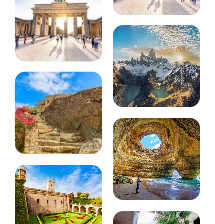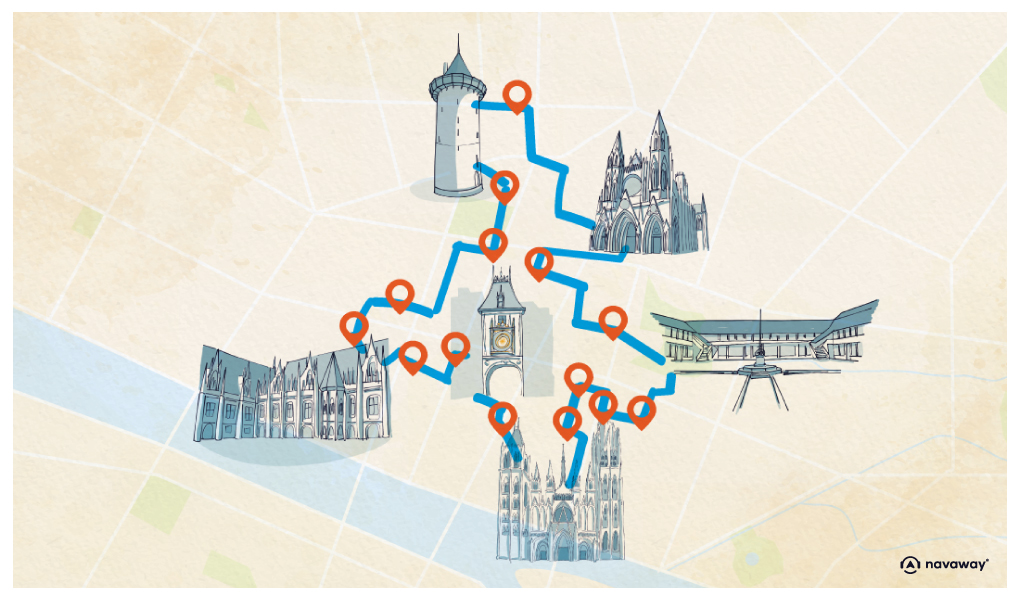
19 must-see places to visit in Normandy

Normandy, the emblematic region of north-western France, boasts an exceptionally rich historical and natural heritage. With its majestic cliffs, beaches steeped in history, picturesque ports and thousand-year-old abbeys, this land of character attracts millions of visitors every year. Whether you’re a nature lover, history buff or simply curious, a visit to Normandy promises unforgettable discoveries. Here are the 19 must-see things to do during your stay in Normandy.

See also the Normandy guide:
- The 9 best places for canoeing in Normandy
- Discover the most beautiful villages in Calvados
- 6 of the most beautiful villages around Rouen, hidden treasures of Normandy
- 15 châteaux and manor houses to visit in Normandy
- Top 11 culinary specialities in Rouen
- Discover the most beautiful villages in Calvados
1. Mont-Saint-Michel

It’s impossible to visit Normandy without seeing the marvel of Mont-Saint-Michel. Perched on its rocky islet in the middle of a bay with spectacular tides, this UNESCO World Heritage site embodies all the majesty of the region. The abbey that crowns the Mont boasts breathtaking architecture combining Romanesque and Gothic styles. From the terraces, the view over the bay is breathtaking, especially at sunset.
During your visit, take a stroll along the medieval streets that wind up to the summit and discover the many craft shops. The high tides offer a fascinating natural spectacle, transforming the Mont into a veritable island. Be sure to check the tide tables before you come to make the most of this unique phenomenon.
2. The cliffs of Étretat
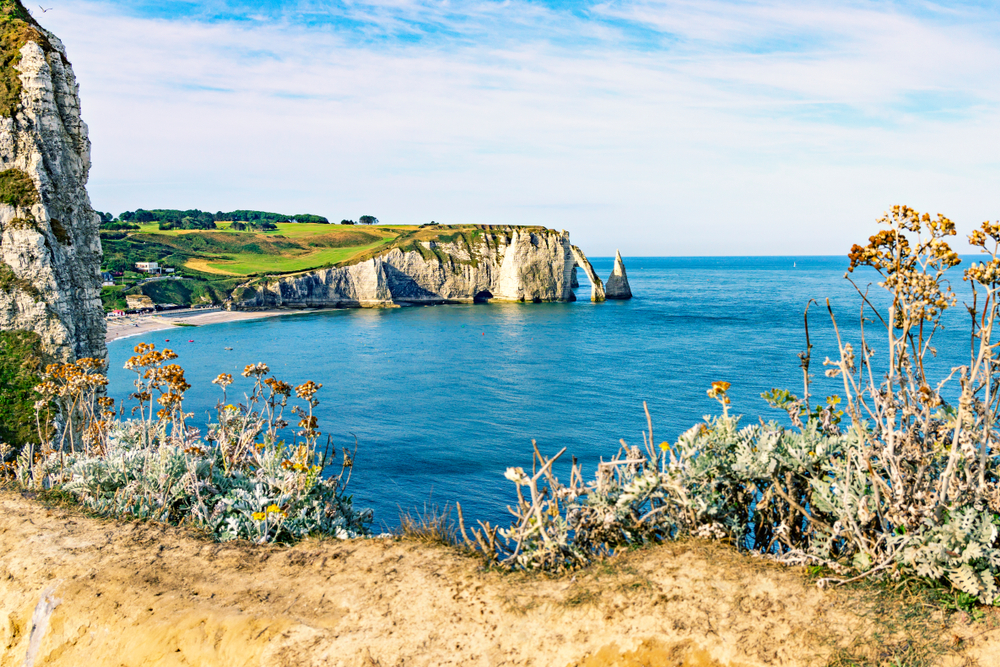
The cliffs of Étretat are among the most photographed landscapes in France. These giants of white chalk, sculpted by marine erosion, create spectacular natural formations such as the Porte d’Aval arch, the Manneporte and the famous Aiguille. These natural monuments have inspired many artists, including Claude Monet and Gustave Courbet.
To fully appreciate these marvels, take the customs path (GR21) that runs along the top of the cliffs. The walk offers exceptional panoramic views over the Channel and allows you to observe the cliffs from different angles. Below, the pebble beach invites you to relax, with an uninterrupted view of the natural arches. Don’t forget to visit the Jardins d’Étretat, veritable works of landscape art perched on the cliffs above.
3. Honfleur and its Vieux Bassin
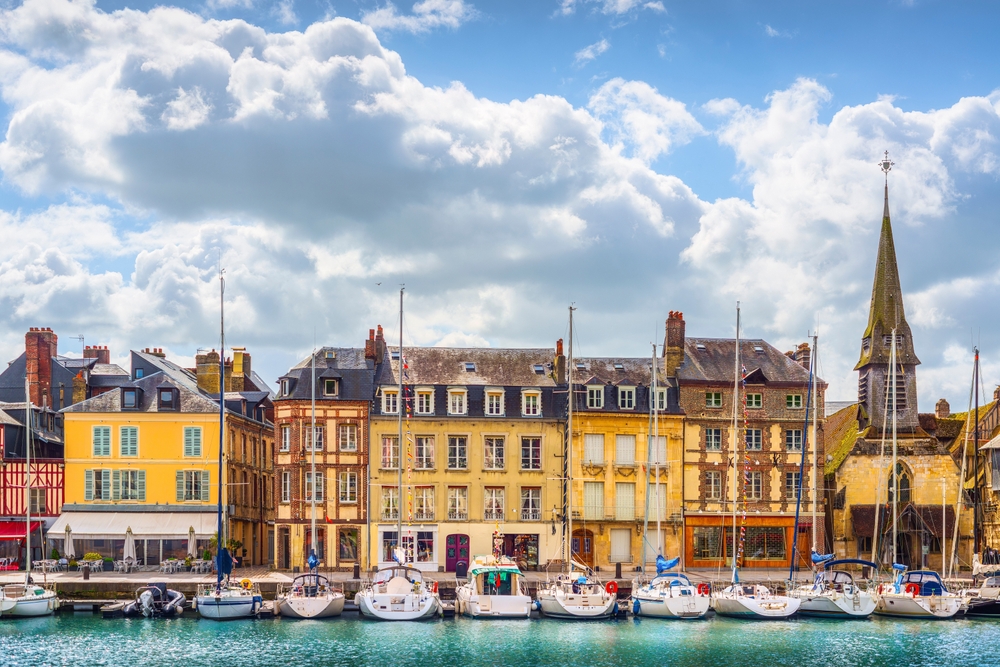
Honfleur is without doubt one of the most charming ports in Normandy. Its Vieux Bassin, lined with tall, narrow houses with slate facades, is a living picture postcard that has seduced countless Impressionist painters. The atmosphere here is unique, a blend of maritime tradition and the gentle Norman way of life.
Stroll through the cobbled streets of the historic centre, visit the church of Sainte-Catherine, the largest wooden church in France, and discover the many art galleries that perpetuate the town’s artistic tradition. The Saturday morning market in Place Sainte-Catherine is a must for sampling local Normandy produce. To extend your discovery of this magnificent town, take the Navaway itinerary, which will show you all its hidden treasures.
4. The D-Day landing beaches
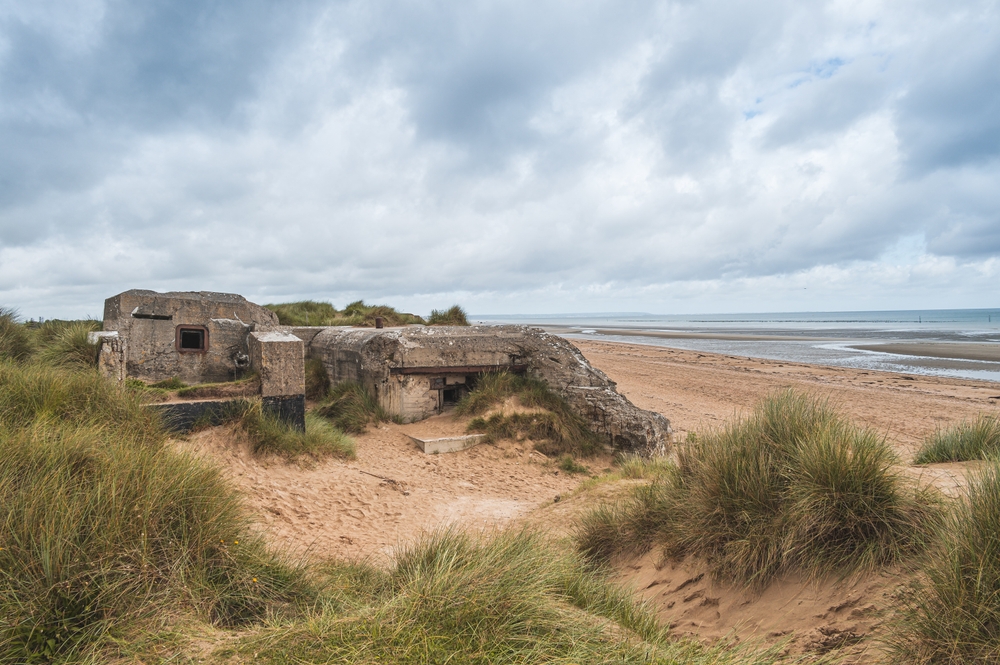
The Normandy coast was the scene of one of the major events of the 20th century: the D-Day Landings on 6 June 1944. A visit to the D-Day beaches is an emotional and memorable experience that cannot be missed. From Omaha Beach to Utah Beach, via Gold, Juno and Sword Beach, each site tells a different page in history.
The Caen Memorial offers a comprehensive approach to the Second World War and the D-Day Landings, through a modern and moving scenography. Don’t miss the American cemetery at Colleville-sur-Mer, a place of remembrance where almost 10,000 soldiers are buried. The Pointe du Hoc, with its German bunkers still visible, bears witness to the violence of the fighting. At Sainte-Mère-Église, the paratrooper dummy hanging from the church tower recalls the heroic episode of paratrooper John Steele.
5. Rouen, the city of a hundred steeples
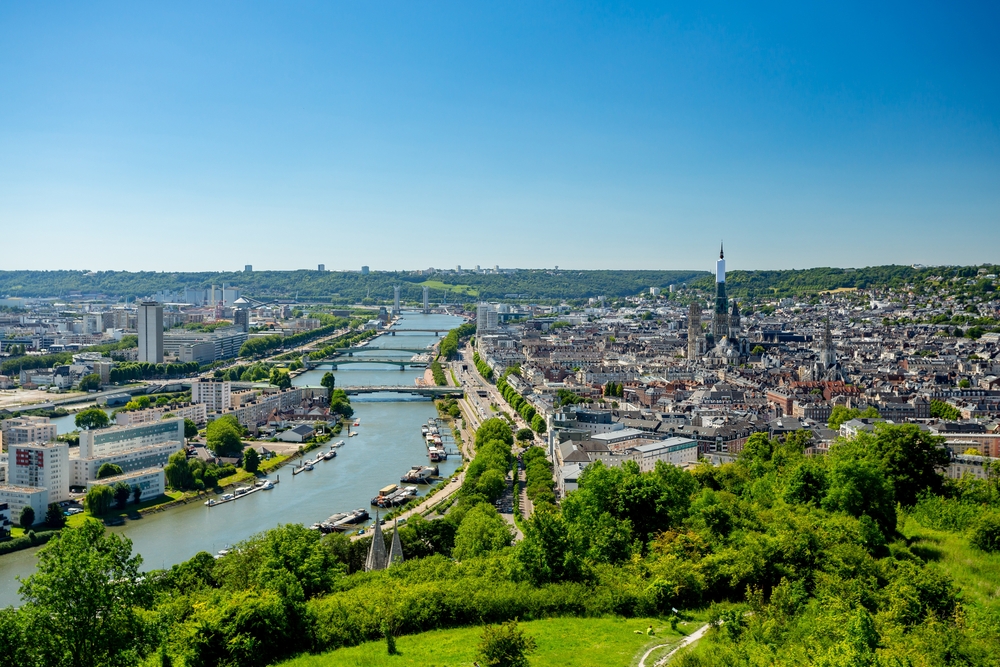
Rouen, the historic capital of Normandy, impresses with its rich architectural heritage. Notre-Dame Cathedral, immortalised by Monet in his famous series of paintings, dominates the historic centre with its 151-metre spire. The Gros-Horloge, a Renaissance belfry spanning a picturesque street, has become the city’s emblem.
The medieval town centre boasts almost 2,000 perfectly preserved half-timbered houses, offering a remarkably authentic setting. The Place du Vieux-Marché, where Joan of Arc was burnt alive in 1431, now houses a modern church in her memory. For art lovers, the Musée des Beaux-Arts houses an impressive collection of Impressionist paintings.
6. Deauville and the Côte Fleurie
Deauville epitomises the elegance of the Belle Époque, with its famous boards, colourful parasols and beach huts bearing the names of the stars of the American Film Festival. For over a century, this upmarket seaside resort has attracted a refined clientele who come to enjoy its sandy beaches, casino and racecourse.
Nearby Trouville-sur-Mer offers a more authentic atmosphere, with its daily fish market and seafood restaurants. Cabourg, with its Grand Hôtel immortalised by Marcel Proust, and Houlgate complete this string of Normandy seaside resorts. The Côte Fleurie is best explored by bike, along the greenway that links the various towns along the coast.
7. The Bayeux Tapestry

A masterpiece of medieval art, the Bayeux Tapestry (actually an embroidery) unfolds over 70 metres the epic story of William the Conqueror’s conquest of England in 1066. Listed in UNESCO’s Memory of the World Register, this exceptional 11th-century work of art fascinates by the finesse of its execution and the richness of its historical narrative.
Important note: The Bayeux Tapestry Museum is currently closed for renovation until October 2027. During this period, take the opportunity to discover Bayeux’s other treasures: Notre-Dame cathedral, its preserved medieval centre and the Baron Gérard museum, which presents collections of local art and history.
8. Monet’s gardens at Giverny
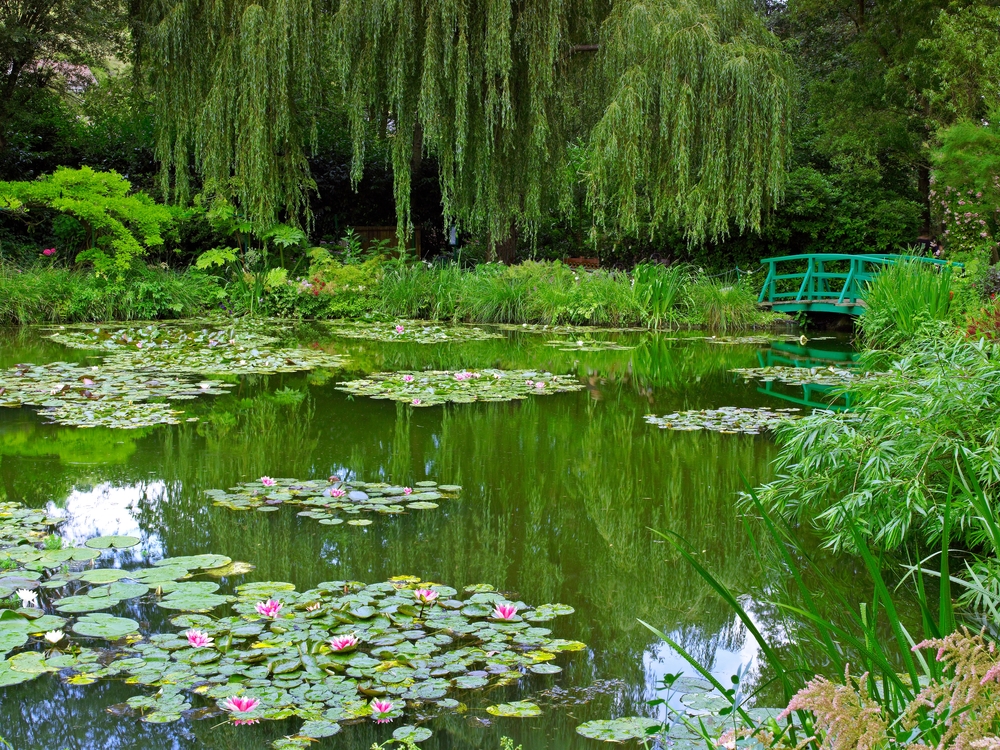
On the border between Normandy and Île-de-France, Giverny is home to the house and gardens of Claude Monet, the master of Impressionism. The painter lived here from 1883 to 1926 and created his most famous series, including the Water Lilies. The water garden, with its Japanese bridge and weeping willows, is an enchanting sight, particularly in spring when the wisteria are in bloom.
The Clos Normand, a flower garden in front of the pink house with its green shutters, is a wonderland of colourful arrangements that change with the seasons. A visit to the house will reveal Monet’s studio and his collection of Japanese prints. It’s best to visit early in the morning or late in the afternoon to avoid the crowds and take full advantage of the serenity of the site.
9. Le Havre and its modern architecture
Completely rebuilt after the 1944 bombings by the architect Auguste Perret, Le Havre is unique in France. Its city centre, a UNESCO World Heritage Site, is a testament to 20th-century urban planning and architecture. The Saint-Joseph church, with its 107-metre lantern tower, is the symbol of this urban renaissance.
The André Malraux Museum of Modern Art (MuMa) boasts one of the finest Impressionist collections in France, with works by Monet, Renoir, Pissarro and Dufy. The redeveloped seafront and its hanging gardens offer a pleasant stroll with sea views. Don’t miss the Perret show flat, where you can explore the interior of a typical reconstruction home.
10. Caen and its abbeys
A town of art and history, Caen was William the Conqueror’s favourite city. Two monumental abbeys bear witness to this prestigious past: the Men’s Abbey, founded by the Duke himself, and the Ladies’ Abbey, created by his wife Mathilde of Flanders. These masterpieces of Norman Romanesque art still house the tombs of the princely couple.
Caen Castle, one of the largest fortified enclosures in Europe, dominates the city and is home to the Fine Arts Museum and the Normandy Museum. The Caen Memorial is a must if you want to understand the history of the twentieth century, from the rise of totalitarianism to the D-Day landings, right up to the contemporary challenges of peace.
11. The Pays d’Auge and its villages
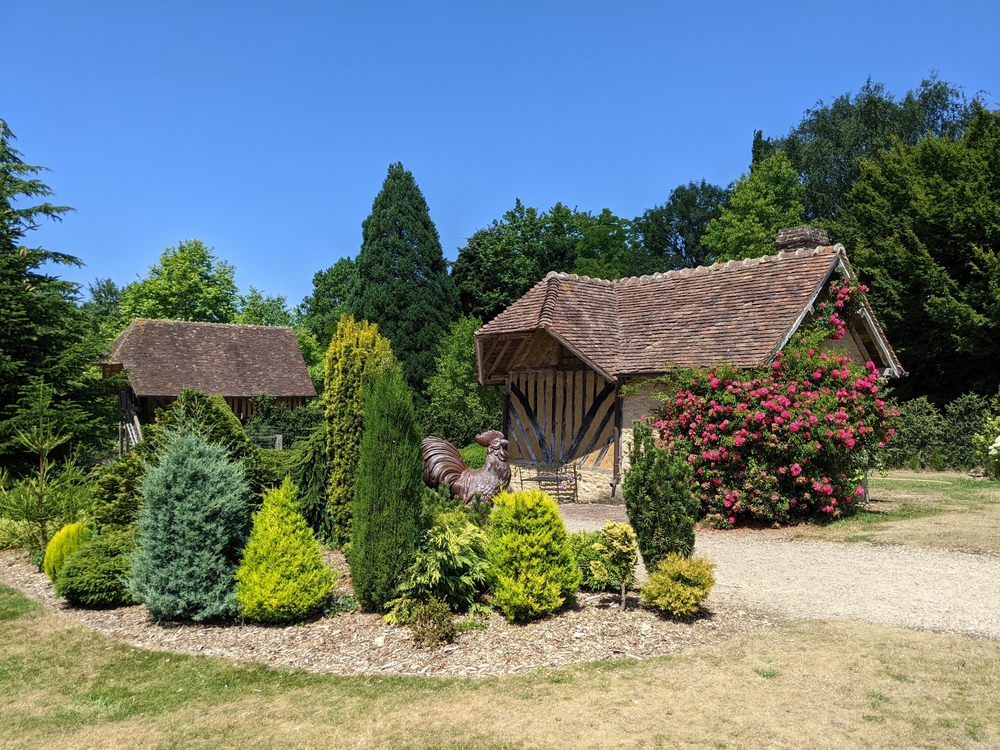
The Pays d’Auge is the epitome of picture-postcard Normandy, with its verdant hedged farmlands, peaceful cows and half-timbered manor houses. This hilly region between Caen and Lisieux produces the jewels of Norman gastronomy: cider, calvados, pommeau and AOC cheeses (camembert, pont-l’évêque, livarot).
Beuvron-en-Auge, listed as one of the Most Beautiful Villages in France, is a delight with its colourful timber-framed houses and 17th-century market hall. Pierrefitte-en-Auge and Beaumont-en-Auge complete this triptych of authentic villages. Take the opportunity to follow the Route du Cidre, winding its way through orchards and artisanal cider houses, where you can sample the local produce.
12. La Suisse Normande
Although there are no peaks higher than 400 metres, Suisse Normande takes its name from its rugged terrain, which stands in stark contrast to the rest of Normandy. The gorges of the River Orne have carved out spectacular landscapes that are ideal for outdoor activities. The Roche d’Oëtre offers an exceptional view of the meandering river, 118 metres below.
This region is a paradise for hikers, climbers, canoeists and mountain bikers. The village of Clécy, capital of Suisse Normande, is an ideal base from which to explore the region. The Roc de la Houle and the Rochers des Parcs offer other remarkable views of these bucolic landscapes.
13. Cotentin and Cherbourg

The Cotentin peninsula reveals a wild and unspoilt Normandy, battered by winds and waves. Cherbourg, a historic seaport, is home to the Cité de la Mer, a museum complex dedicated to the underwater adventure. Here you can visit Le Redoutable, France’s first nuclear submarine, and discover the story of the Titanic through a permanent exhibition.
The Cotentin coastline is full of surprises, with the picturesque port of Barfleur, listed as one of France’s Most Beautiful Villages, and the dunes of Vauville. The Cap de la Hague, at the western end of the peninsula, offers breathtaking views of the jagged coastline where moorland and cliffs mingle.
14. Granville, the Monaco of the North
Perched on a rocky promontory, Granville’s ramparts face the sea. The fortified upper town reveals a labyrinth of cobbled streets and granite houses. France’s leading shellfish port, Granville celebrates its annual carnival, one of the most famous in France, which brings the town to life for five days in February.
Villa Les Rhumbs is home to the Christian Dior Museum, housed in the childhood home of the famous couturier. The garden, overlooking the sea, still inspires the collections of the haute couture house. From Granville, there are sea links to the Chausey Islands, a wild archipelago with a tropical feel, turquoise waters and pink granite rocks.
15. The Chausey Islands

Located 17 kilometres off Granville, the Chausey archipelago is a small, unspoilt paradise. At high tide, there are 52 islets; at low tide, the number rises to 365, with tidal ranges sometimes reaching 14 metres. Only the Grande Île is permanently inhabited by a handful of residents.
The archipelago’s white sandy beaches, secret coves and crystal-clear waters make it seem like the end of the world. The marine flora and fauna are exceptionally rich. One day is enough to walk around the Grande Île, but to fully immerse yourself in the unique atmosphere of the place, it is recommended that you spend a night in the only hotel or in one of the self-catering cottages.
16. The Camembert route
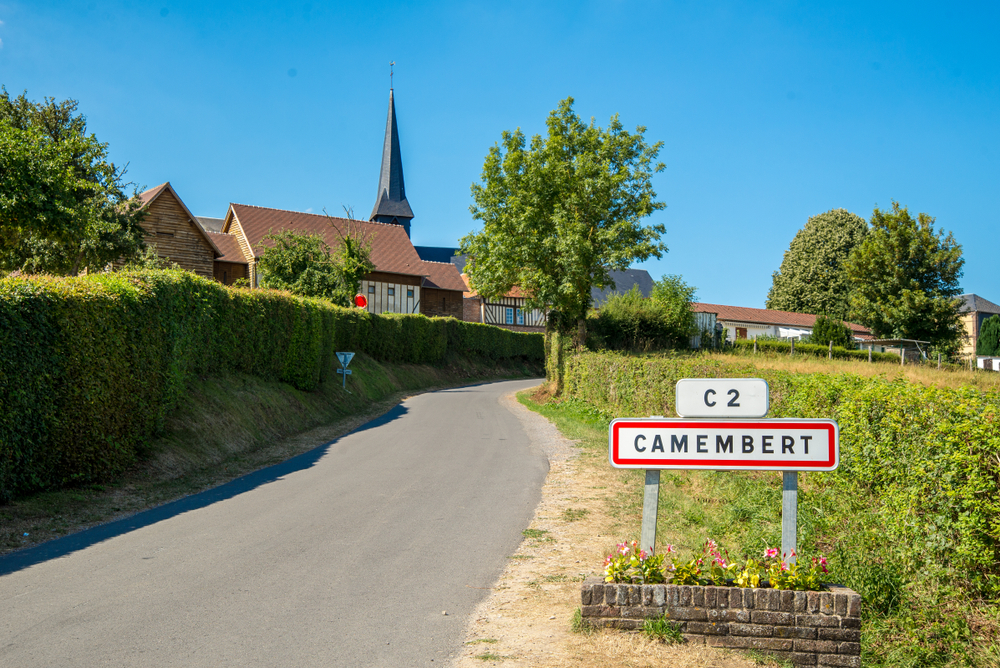
France’s most famous cheese deserves its own route! The Route du Camembert winds its way through the bocage countryside of Orléans, from Vimoutiers to Camembert, the village that gave its name to the cheese. A statue of Marie Harel, the legendary creator of Camembert, stands in the town square in Vimoutiers.
The village of Camembert is home to the Maison du Camembert, where you can discover the history and secrets behind the making of this iconic cheese. Numerous farms and cheese dairies line the route, offering tours and tastings. The route also crosses the cider route, allowing visitors to enjoy all the products of Normandy’s terroir in magnificent bucolic landscapes.
17. Le Haras du Pin

Nicknamed the “Versailles of the horse”, Le Pin National Stud was founded by Louis XIV in 1665 to improve the kingdom’s horse breeds. The château and its outbuildings, designed by the architect Jules Hardouin-Mansart, are set in majestic surroundings amidst 1,000 hectares of parkland.
The stud farm perpetuates the Norman equestrian tradition by hosting stallions and pedigree mares. Guided tours are available of the stables, the horse museum and carriage shows. During the summer, the “Jeudis du Pin” horse shows in the main courtyard combine tradition and modernity.
18. Château-Gaillard and Les Andelys
Overlooking the meandering Seine from its cliff face, Château-Gaillard was built in one year by Richard the Lionheart to defend Normandy from the kingdom of France. The imposing ruins of this medieval fortress bear witness to the military genius of the time. The view from the ramparts takes in the Seine valley and the charming village of Les Andelys below.
Petit-Andely, on the banks of the Seine, and Grand-Andely, slightly set back, form a harmonious ensemble of timber-framed houses and cobbled streets. The church of Notre-Dame du Grand-Andely boasts magnificent Renaissance stained glass windows. A stroll along the banks of the Seine offers a different perspective on the château, which is particularly photogenic at sunrise or sunset.
19. Dieppe and the Côte d’Albâtre
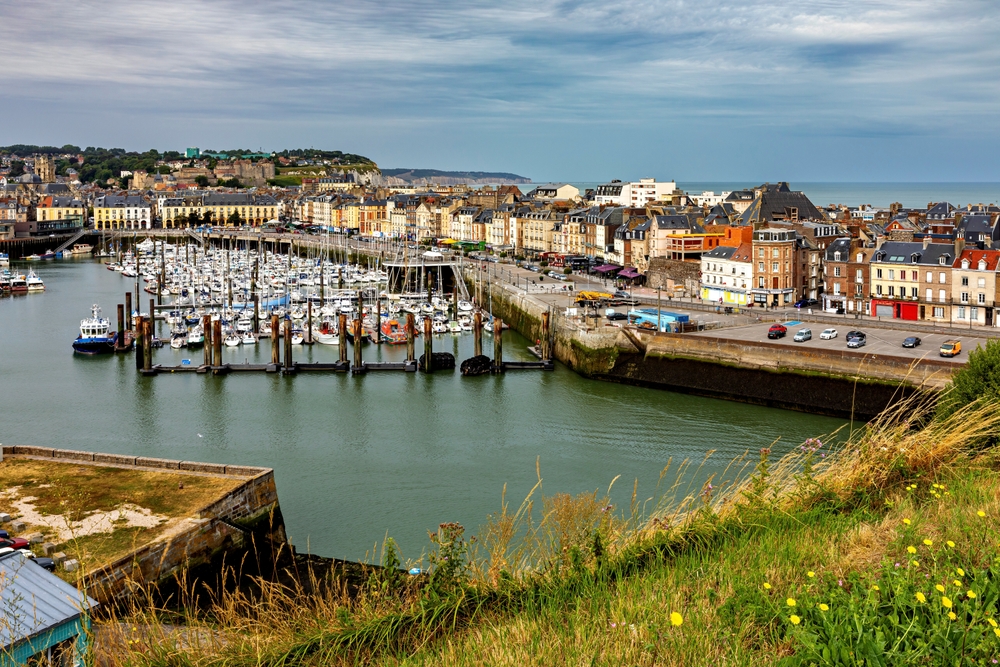
Dieppe, the oldest fishing port in the Channel, has cultivated its maritime character with authenticity. The castle-museum, perched on the western cliff, overlooks the port and the long pebble beach. The main rue Jean-Ango and the Pollet district, a former fishermen’s stronghold, are well worth a careful stroll.
On Saturday mornings, the market in Place Nationale is one of the most famous in Normandy for its freshly landed seafood. The Côte d’Albâtre, which stretches from Dieppe to Le Tréport, offers a permanent spectacle of chalk cliffs streaked with black flint, sculpted by marine erosion. The GR21 long-distance hiking trail allows you to discover this spectacular coastline in several stages.
In conclusion, a visit to Normandy is an encounter with an authentic region where history is written in every stone, where nature displays its finest finery and where gastronomy delights the taste buds. From the majestic cliffs of Étretat to Mont-Saint-Michel, via the D-Day landing beaches and picturesque ports, Normandy offers a diversity of landscapes and heritage that leaves no one indifferent. Whether you stay for a weekend or several weeks, each discovery will reveal a new facet of this endearing region. Don’t hesitate to get off the beaten track, get lost in the back roads and talk to the Normans, whose warm welcome adds to the region’s charm. Normandy is as much about living as it is about visiting, so take the time to savour every moment of your Normandy holiday.
Frequently asked questions
When is the best time to visit Normandy?
Normandy can be visited all year round, but the most pleasant periods are from April to October. Spring (April-May) offers lush green landscapes and flowers, especially at Giverny. Summer (June-August) is ideal for enjoying beaches and outdoor activities, although it is also busier. Autumn (September-October) is more colourful and less busy. Winter is mild but rainy, perfect for exploring towns and museums in peace and quiet.
How many days does it take to visit Normandy?
A 3-day weekend allows you to discover the major sites such as Mont-Saint-Michel, Étretat and Honfleur. For a more in-depth exploration, including the D-Day landing beaches, Rouen, Caen and the Pays d’Auge, allow 5 to 7 days. Two weeks will allow you to explore the region in depth, taking time to stop off in small villages and enjoy outdoor activities.
What gastronomic specialities are not to be missed in Normandy?
Normandy is a paradise for gourmets! Don’t miss camembert, pont-l’évêque and livarot (AOC cheeses), oysters and mussels from the coast, cider and calvados, teurgoule (rice pudding flavoured with cinnamon), Caen-style tripe, not forgetting sweet specialities such as Caen shortbread, Isigny caramels and Normandy apple pie. The local markets are the ideal place to discover these local products.
Is Normandy a family destination?
Absolutely! Normandy has plenty of family-friendly activities to offer: beaches for swimming and sandcastles, animal parks like Jurques zoo, interactive museums like the Cité de la Mer in Cherbourg, easy walks in the Normandy bocage, and of course a visit to Mont-Saint-Michel to amaze young and old alike. Children can learn about animals and how local produce is made on educational farms. A wide range of accommodation options are available for families.
200 audioguided tours for cities all around the world
Download